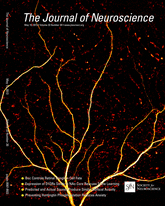- Submit a Protocol
- Receive Our Alerts
- Log in
- /
- Sign up
- My Bio Page
- Edit My Profile
- Change Password
- Log Out
- EN
- EN - English
- CN - 中文
- Protocols
- Articles and Issues
- For Authors
- About
- Become a Reviewer
- EN - English
- CN - 中文
- Home
- Protocols
- Articles and Issues
- For Authors
- About
- Become a Reviewer
In utero Electroporation of the Embryonic Mouse Retina
Published: Vol 4, Iss 19, Oct 5, 2014 DOI: 10.21769/BioProtoc.1255 Views: 15457
Reviewed by: Oneil G. BhalalaXuecai Ge

Protocol Collections
Comprehensive collections of detailed, peer-reviewed protocols focusing on specific topics
Related protocols
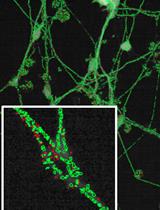
A Parkinson’s Disease-relevant Mitochondrial and Neuronal Morphology High-throughput Screening Assay in LUHMES Cells
Tom Leah [...] Heather Mortiboys
Jan 5, 2021 5798 Views
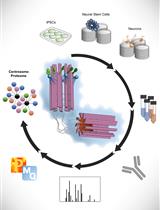
Spatial Centrosome Proteomic Profiling of Human iPSC-derived Neural Cells
Fatma Uzbas and Adam C. O’Neill
Sep 5, 2023 2491 Views
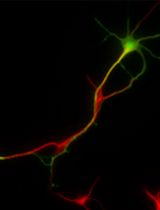
Primary Neuronal Culture and Transient Transfection
Shun-Cheng Tseng [...] Eric Hwang
Jan 20, 2025 2544 Views
Abstract
This protocol is useful to manipulate gene expression in the embryonic retina and compare the result with the contralateral non electroporated retina. In addition, the electroporation of a membrane or cytoplasmic tagged GFP allows to determine the effects of gene manipulation on the outgrowth of retinal ganglion cell axons (Garcia-Frigola et al., 2007) or simply to follow axon outgrowth in mutant embryos. DNA can be directed to different quadrants of the retina (ventral or dorsally) by modifying the position of the electrodes (Petros et al., 2009; Sánchez-Arrones et al., 2013). After the procedure, embryos are left developing to the desired stage, including postnatal stages.
Keywords: Gene ExpressionMaterials and Reagents
- E13 embryos from C57BL6J pregnant mice (2 - 4 months old) were electroporated as described below. Animals were collected and handled following the Spanish (RD 223/88), European (86/609/ECC), and American (National Research Council, 1996) regulations.
- Plasmid Midi Kit (Roche, catalog number: 0 3143414001 ) (e.g. Genopure Plasmid Midi Kit)
- Fast green FCF (Sigma-Aldrich, catalog number: F7252 )
- Sterile water
- Isofluorane (Abbott Laboratories, catalog number: 880393.4 )
- Sterile saline (see Recipes)
- 10x phosphate-buffered saline (PBS) (see Recipes)
Equipment
- Borosilicate glass capillaries (World Precision Instruments, catalog number: 1B 100 F-4)
- Micropipette puller (Sutter Instrument, model: P36 )
- Aspirator tube assembly (Sigma-Aldrich, catalog number: A5177-5EA )
- Black braided silk 3/0 (Lorca Marín S.A.Ctra, catalog number: 55159 )
- Sterile gauze and cotton swab (Aposan, catalog number: 343160.6 )
- Dissecting tools (Figure 1C)
- Ring forceps (Karl Hammacher GmbH, catalog number: HSC 703-96 )
- Serrated forceps (Fine Science Tools, catalog number: 11101-09 )
- Forceps (Fine Science Tools, catalog number: 91150-20
- Fine scissor (Fine Science Tools, catalog number: 14094-11 )
- Ring forceps (Karl Hammacher GmbH, catalog number: HSC 703-96 )
- Dissecting microscope (Leica Microsystems, model: MZ125 ) and fiber optic light (LEICA KL 2500 LCD)
- Squared Electroporator (BTX The Electroporation Experts, model: ECM830 )
- Generator Footswitch (BTX The Electroporation Experts, model: 1250FS )
- Platinum plate tweezers-type electrode (Nepa Gene, model: CUY650P5 )
- Isofluorane vaporizer (Surgivet®, Smiths Medical, model: 100)
Procedure
- DNA preparation
- Prepare plasmids using commercial kits (e.g. Genopure Plasmid Midi Kit).
- Dilute DNA in sterile water to final concentration of 1 μg/μl. Add 1/10 volume of 0.1% fast green solution in water to the DNA solution. A total volume of 5-10 μl will be sufficient to electroporated eight embryos.
- Prepare plasmids using commercial kits (e.g. Genopure Plasmid Midi Kit).
- Preparation of micropipette
- Pull borosilicate glass capillaries with the Micropipette puller. Recommended Puller settings are the followings: 774 heat; 100 pull and 1 time (these parameters may vary according to the Puller).
- Cut the tip of the pulled pipette using forceps at 1 - 2 cm (Figure 1A).
Note: The Figure 1 shows a new panel illustrating the initial and final shape of the pipette, left to right respectively.
- Pull borosilicate glass capillaries with the Micropipette puller. Recommended Puller settings are the followings: 774 heat; 100 pull and 1 time (these parameters may vary according to the Puller).
- Electroporation.
- For E13 embryos and the indicated electroporator, the following settings are recommended: five pulses of 38 V, 50 ms each, at 950 ms intervals. For E14 embryos the recommended setting are five pulses of 48 V, 50 ms each, at 950 ms intervals.
Note: The generation of the RGCs occurs at E13; therefore the electroporation was done at this stage. - Aspirate the DNA mixture to fill the tip of the pulled micropipette (Figure 1B). Anesthetized pregnant mice with isofluorane.
- Place the anesthetized mice with the abdomen up on the bench top and place a mask with isofluorane vaporizer on the nose.
- Wash the abdomen with ethanol or povidone iodine. Perform a longitudinal incision of about 2 cm in the mid of the abdomen using a fine scissor (Figure 1C).
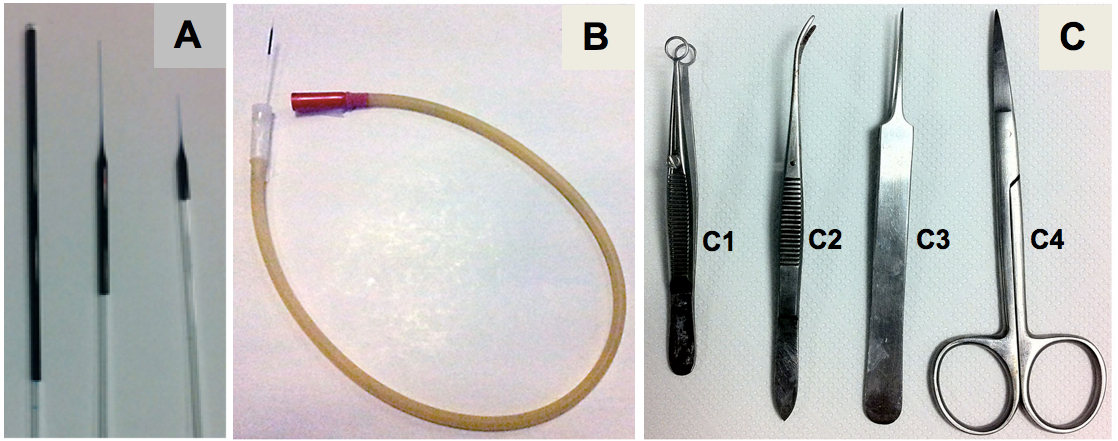
Figure 1. Shape of the glass pipette before and after pulling A. Aspirator tube and glass capillary with DNA mixture B and dissecting tools C. - Place a cotton swab soaked in pre-warmed saline to 37 °C on the abdomen to maintain the tissue moist and avoid accidental damage of the organs, grab the two horns of the uterus with two cotton swab and gently place them on top of the sterile gauze (Figure 2A).
- Hold the embryos with a ring forceps in one hand making sure that you have a lateral view, so that the eye can be easily identified. The use of a pigmented mouse strain facilitates the procedure (as C57BL6J). Using the other hand to hold the mouth pipette. Poke the uterus with the pipette and introduce the tip of the prefilled pipette into the eye (being careful not through the lens) and gently blow the DNA solution into the eye (Figure 2B).
- Place the electrodes at the left and right side of the uterus so that the embryonic head is just in the middle. The positive electrode must be placed on the side of the injected eye and covered all it (see arrowhead in Figure 2C). Apply the electric pulses and perform the same procedure with the following embryo.
- Once all embryos have been electroporated, place the uterine horns back into the mouse abdominal cavity.
- Suture the incision and replace the pregnant dam into the cage. Let embryos develop to the desired stage (Figure 2D).
- The electrodes can be placed in several angles of the eye for electroporated diverse retina domains (examples showed in Figure 2E).
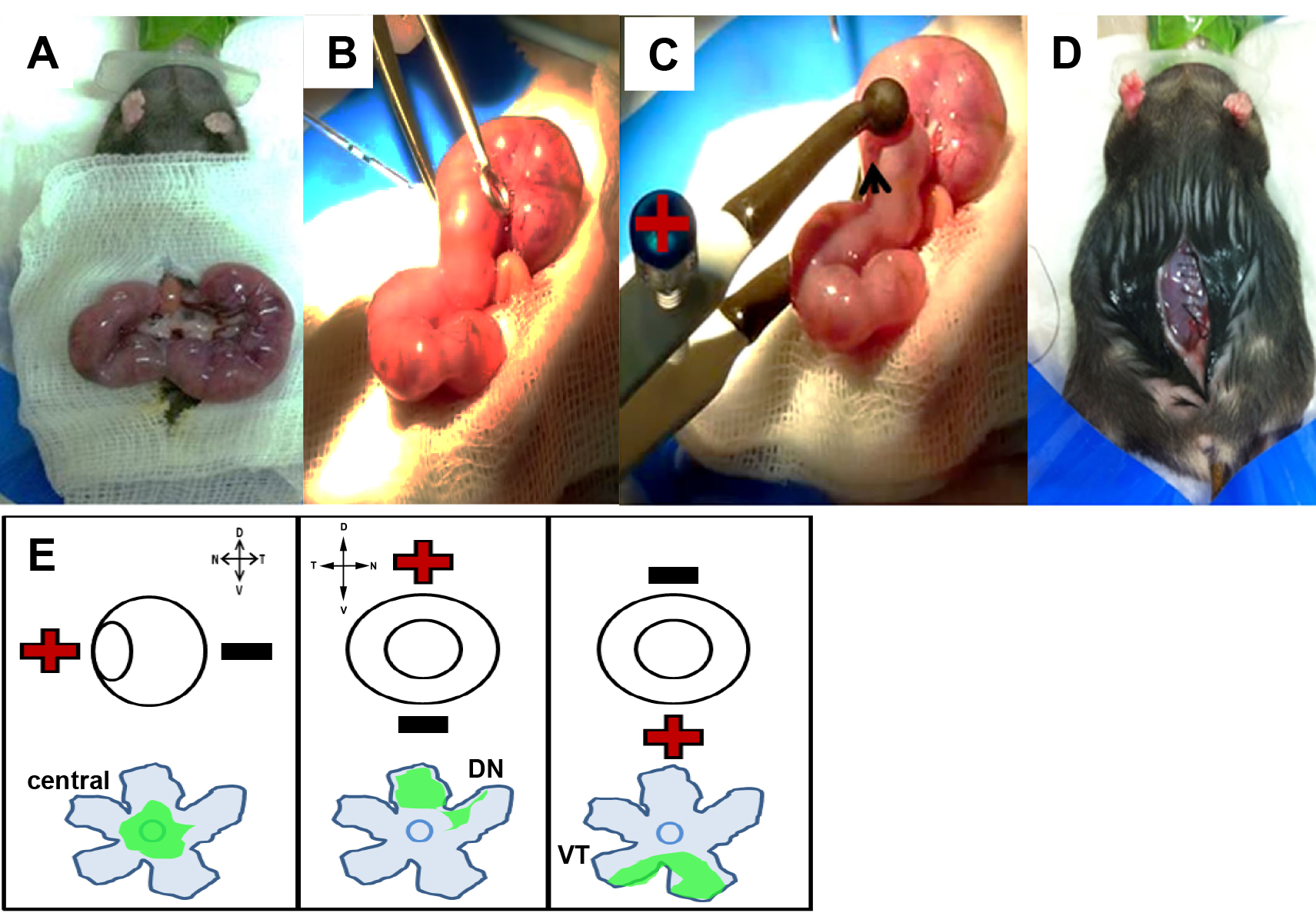
Figure 2. The anesthetized pregnant mice with embryos on top of the cotton swab A. Injection into the eye of the embryo B. Position of the electrodes on the uterine walls (arrowhead indicate the eye) C. Suture the abdominal cavity D. The diagram indicates several positions of the electrodes. The flat mounted retinas illustrate in green different electroporated domains, central, nasal and temporal E.
- For E13 embryos and the indicated electroporator, the following settings are recommended: five pulses of 38 V, 50 ms each, at 950 ms intervals. For E14 embryos the recommended setting are five pulses of 48 V, 50 ms each, at 950 ms intervals.
Representative data
- This protocol is useful to determine the effects of gene manipulation during embryonic retina (Figure 3).
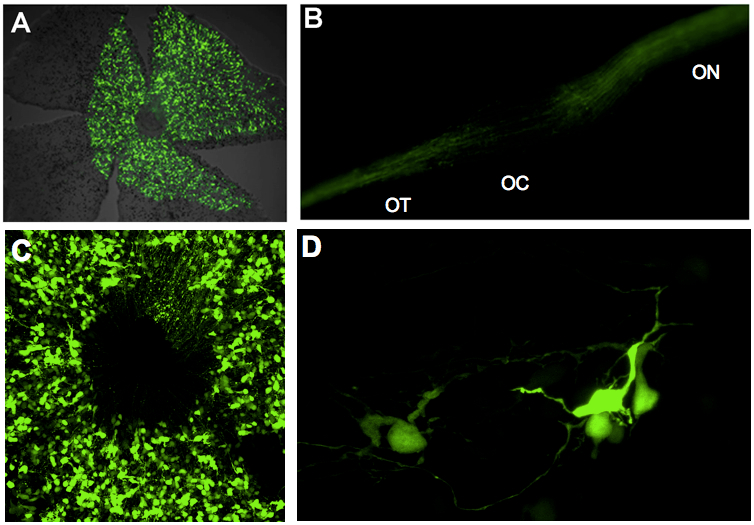
Figure 3. Overview of the flat-mount retina electroporated with a GFP plasmid A. Green labelled axons in the optic nerve (ON), optic chiasm (OC) and optic tract (OT) B. Magnification of the optic disc C and electroporated retinal cells D.
Recipes
- Saline solution
Dissolve 9 g NaCl in 1 L of distilled water and autoclave
Acknowledgments
We would like to thank Paola Bovolenta for her support and critical reading. We are grateful to Eloisa Herrera and Cristina Garcia-Frigola for the adapted protocol.
References
- Garcia-Frigola, C., Carreres, M. I., Vegar, C. and Herrera, E. (2007). Gene delivery into mouse retinal ganglion cells by in utero electroporation. BMC Dev Biol 7(1): 103.
- Petros, T. J., Rebsam, A. and Mason, C. A. (2009). In utero and ex vivo electroporation for gene expression in mouse retinal ganglion cells. J Vis Exp (31), e1333.
- Sánchez-Arrones, L., Nieto-Lopez, F., Sánchez-Camacho, C., Carreres, M. I., Herrera, E., Okada, A. and Bovolenta, P. (2013). Shh/Boc signaling is required for sustained generation of ipsilateral projecting ganglion cells in the mouse retina. J Neurosci 33(20): 8596-8607.
Article Information
Copyright
© 2014 The Authors; exclusive licensee Bio-protocol LLC.
How to cite
Readers should cite both the Bio-protocol article and the original research article where this protocol was used:
- Nieto-Lopez, F. and Sanchez-Arrones, L. (2014). In utero Electroporation of the Embryonic Mouse Retina. Bio-protocol 4(19): e1255. DOI: 10.21769/BioProtoc.1255.
-
Sánchez-Arrones, L., Nieto-Lopez, F., Sánchez-Camacho, C., Carreres, M. I., Herrera, E., Okada, A. and Bovolenta, P. (2013). Shh/Boc signaling is required for sustained generation of ipsilateral projecting ganglion cells in the mouse retina. J Neurosci 33(20): 8596-8607.
Category
Neuroscience > Development > Neuron
Neuroscience > Neuroanatomy and circuitry > Animal model
Developmental Biology > Morphogenesis
Do you have any questions about this protocol?
Post your question to gather feedback from the community. We will also invite the authors of this article to respond.
Share
Bluesky
X
Copy link


